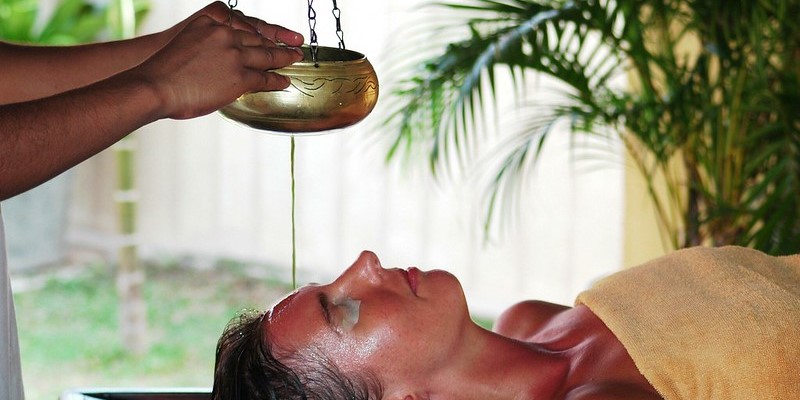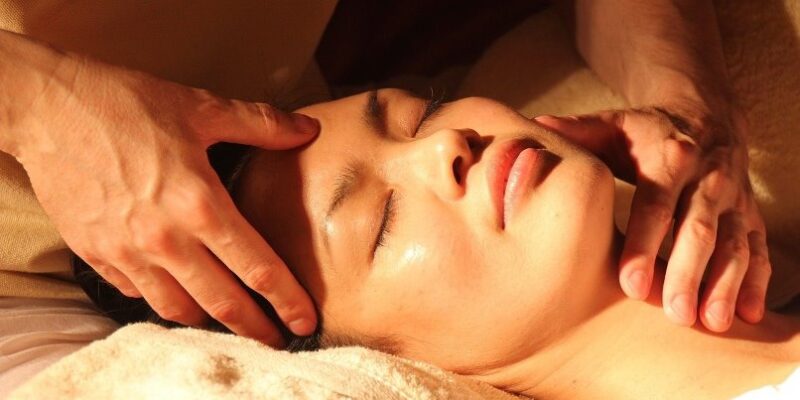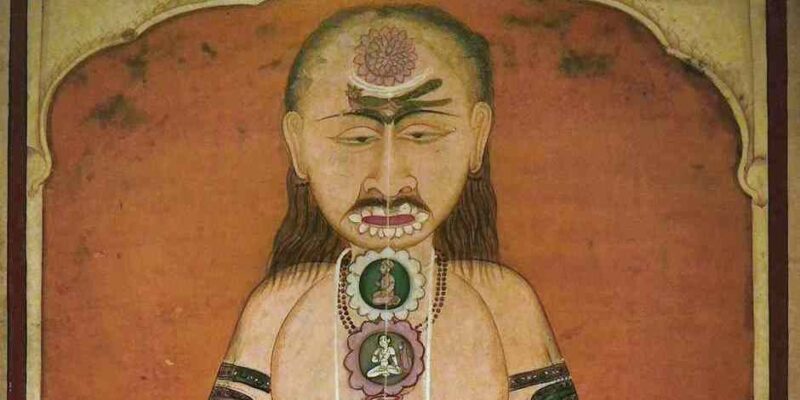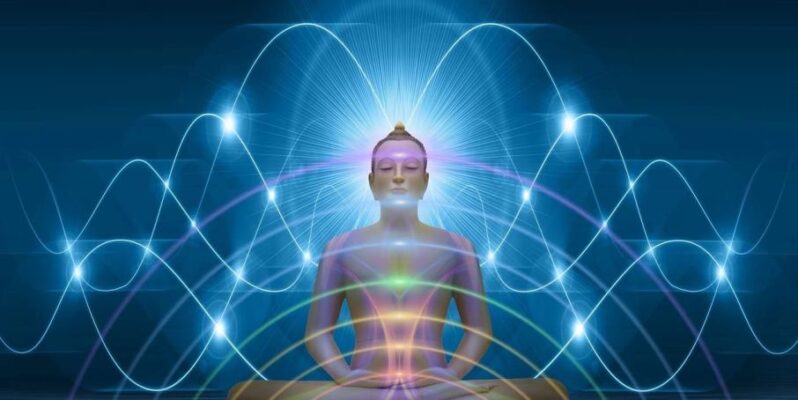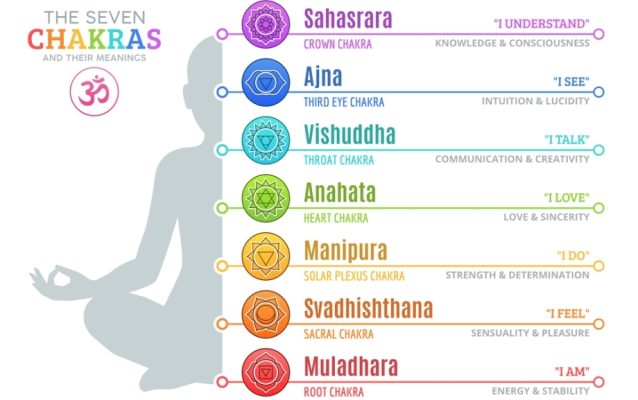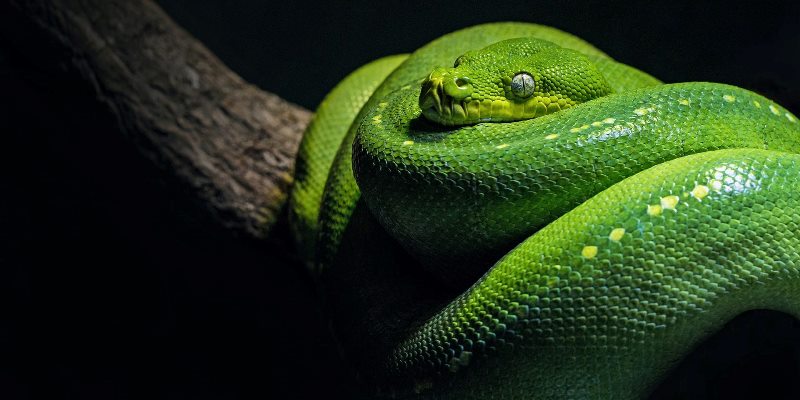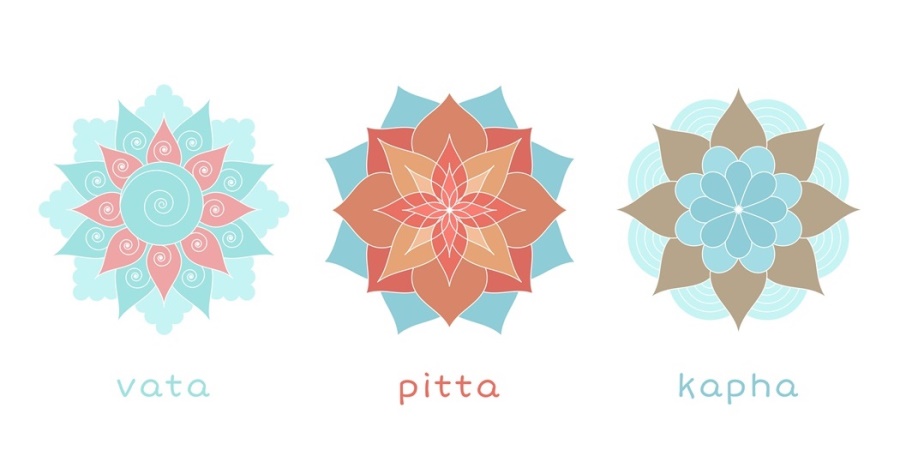
In Ayurveda, a Dosha is a physico-biological bodily element that constructs our constitution. There are three main Doshas, the reason why this Ayurvedic theory (or concept) is called Tridosha. It’s the physiological basis around which the actual practice of Ayurveda revolves. The three Doshas are based on an understanding of the interconnection between the five elements or Pancha Bhoota: ether, air, water, fire, and earth.

The Ayurvedic idea of disease and health takes into account the Tridosha concept by subsequently identifying an imbalance of the Doshas and trying to reach a balance. Additionally, Ayurveda is also focused on maintaining a Tridosha balance, which is rather about prevention of illness.
The three Doshas recognized are called Vata (ether / air), Pitta (fire / heat / water) and Kapha (water / earth). It’s thought that the balance of Doshas is in constant flux and movement, ever changing due to weather, season, food, and emotions, among other influences.
The ideal situation is when the state of the Doshas is balanced, that is, all the three Doshas will be available in equal proportion or in those proportions a particular person needs. Yet, a particular Dosha should be increased if it’s thought to be too weak or depleted, or alternatively decreased when it’s in excess or too strong. In fact, the fundamental idea behind Ayurvedic healing is to decrease excess Doshas and/or to increase depleted Doshas
In Ayurveda, it’s also believed that a person is of a particular Dosha-type, that is, one of their Doshas is predominant and strongly influences one’s character, behavior, and physique. It’s called the person’s constitution or body-mind type, and makes up for certain strengths and weaknesses in a person. One can also be of a mixed Dosha-type. In Ayurvedic diagnosis and treatment plans one’s Dosha-type is always taken into account.
Vata
Vata Dosha is associated with properties of dry, cold, light, and movement. All movement in the body is due to Vata. An excess of the Vata Dosha, can, for instance, give rise to issues like flatulence, rheumatism, or mental, nervous and digestive disorders. When Vata is in depletion it can produce loss of sensation or awareness, low energy, and general weakening, among other symptoms.
Pitta
Pitta Dosha is associated with hotness, moist, liquid, sharp, sour, and body heat. It’s energy that aids digestion and enhances metabolism. An excess of Pitta can, for instance, lead to inflammations and infections. A lack of Pitta may induce a weak or dysfunctional digestion, coldness, and loss of complexion.
Kapha

Kapha Dosha is associated with heaviness, cold, tenderness, softness, slowness, lubrication, and the carrier of nutrients. It’s the body’s nourishing force.
An excess of Kapha Dosha can increase mucus, weight, oedema, and lung disease, among other issues. A depletion of Kapha can show as a dry respiratory tract, burning sensation in the stomach, excessive thirst, weakness, and lack of sleep.
Mind that the number of the above mentioned examples of Dosha excess and depletion pathologies is just a fraction of possible symptoms and illnesses. In any case, to combat Dosha imbalances, Ayurveda medicine throws in an enormous range of healing tools, methods, and techniques, which include a vast number of herbal, nutritive, massage, spiritual, and bodywork treatments.





